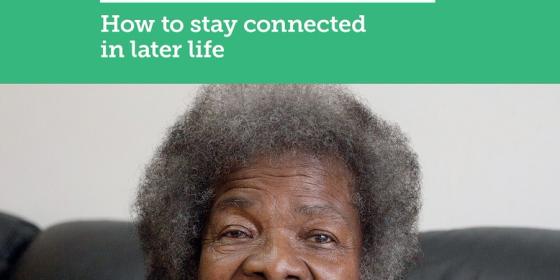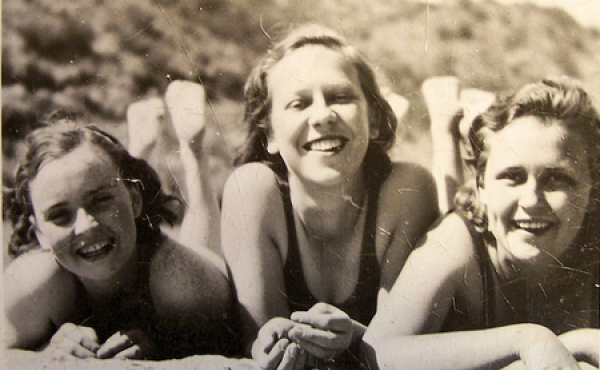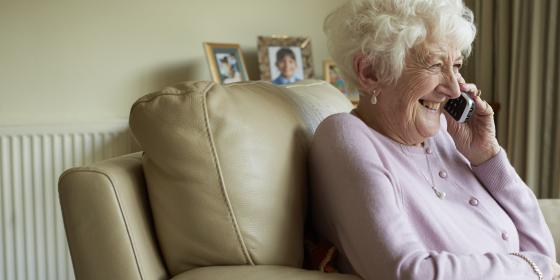
One of the biggest problems when we talk about loneliness is that we are talking about the symptom of a problem not the cause. And if we really want to address it as a social problem we need to harvest ideas from across neuro-science, social anthropology and social psychology. The key word there being social!
John Cacioppo the US neuro-scientist, said that loneliness is like hunger. With hunger our body is telling us we need to eat – with loneliness to address our social health. And according to his compatriots Holt-Lunstadt et al, loneliness is actually the symptom of living alone and having insufficient high quality relationships. So if we want to address the problem we need to look at how we make friends and sustain relationships.
We know that simply addressing the issue of living alone by moving people into shared living isn’t the solution alone – though it can of course help. I’m thinking student halls of residence. But older people living in multi-generational households are not necessarily less lonely – they can feel excluded from the busy-ness of the younger lives around them. And research comparing loneliness amongst those living in their own home, in sheltered housing or care homes by Swansea University, showed that although those living in communal housing reported higher numbers of social interaction, the majority still counted their ‘real friends’ as those that were formed prior to their move – which is why maintaining those relationships when you move is so essential.
Robin Dunbar’s work on circles of intimacy explains the value of both close and loose ties and their changing dynamics through the life-course. The average person has 144 ‘friends’ (apparently driven by the capacity of our brains). The inner circle of 3-5 close friends or relationships provide a sense of being loved and cared for – they make and you feel like you matter. The outermost circle – of people you simply recognise in the street give you a sense of community and belonging. All of the circles matter.
The peak age for the most friendships is between 15-25, circles shrink during the settling down years of family and having children, they stabilize through to our mid 50s and decline after that. Why? The most obvious reason is that more of our siblings, partners and friends die as we age. And that more barriers are thrown in the way of participation and inclusion – whether they be health related – lack of mobility, sensory impairment, onset of dementia – or other risks associated with ‘transitions’ – retirement, bereavement, becoming a care giver, moving house or into a home. Of course, these transitions occur throughout the life course – whether changing or leaving school, going to college, leaving college, changing jobs or becoming unemployed, or a new parent, divorce or moving house.
In all these transitions its vital we ‘safeguard our convoy’ of friendships whilst taking the opportunity to generate new ones.
However, according to ‘circles of intimacy’ thinking when the innermost circle of close relationships falls below 3-5 people the individual starts feeling lonely as they lose the people to whom they feel they matter and who offer them support through the ups and downs of life. The solution to this is either to replenish all the circles or to draw more people in from the outer circles. That sounds simple enough but alongside the potential lack and barriers to social opportunity, we need to better understand what helps people to make, keep and deepen friendships too. There are five factors that really matter: psychological resilience; social skills; activities; rich associational communities and spaces and places.
Firstly, we need to understand the psychological pre-conditions that enable us to connect – like confidence, optimism, acceptance and resilience. Because to make friends we need to be confident and open. If we are depressed or low – we are less likely to have the strength and capacity to reach out to others. And we need more support and training available to those whose resources are low.
Secondly we need to understand the pro-social behaviours that enable us to make to friends and connect socially: social skills such as the ability to listen, to converse, express empathy and build rapport, find common cause or interest, offer support and reciprocate. So when we design social events we can build in opportunities to enable these skills to develop and give participants a sense of purpose and status.
Work carried out by the Gulbenkian's Transitions in Later Life programme is valuable here in addressing both these factors. But we also need to explore more approaches and tools that can nudge people into sustaining their psychological resilience and honing their social skills.
Thirdly we need to create the opportunities for lonely people to connect – there’s no point being the friendliest person in the world if you’re stuck at home staring at the wallpaper. Conversely if we sit on the bus all day just chatting to our fellow passengers we might not actually feel less lonely – because real friendships need time to develop and grow. Interventions like community navigators, social reconnections or prescribing models can make a real difference here – of especial value are those that build on the agency and assets of the individual as well as those of the community and give time for friendships to grow.
The fourth factor is associational life – a thriving community is one in which a myriad of groups, clubs and societies flourish – from choirs, to faith groups, to ramblers associations, to tennis clubs to local history societies. A broad range of these clubs and societies cater to a variety of ages - meaningful activities built around purpose, fun and absorption enable community and friendship to build around them.
The fifth factor focuses on spaces and places and the transport that connects them. Since we need proximity to connect with each other – making environments friendly and maximizing the use of all community assets – including businesses is crucial.
I’ve been campaigning in this area for nearly 10 years now and I keep coming back to the idea of ‘safeguarding your convoy’. And I'm still drawn to the New Economics Foundation’s 5 features of well-being: Connect, Take Notice, Stay Active, Keep Learning and Give. They are great reminders of what matters to our social health.
But if we are really going to tackle loneliness and invest in our social health we need building blocks that start from the individual out – the confidence, social skills and relationship forming that make us truly feel loved and valued.

 Apply to be a volunteer
Apply to be a volunteer